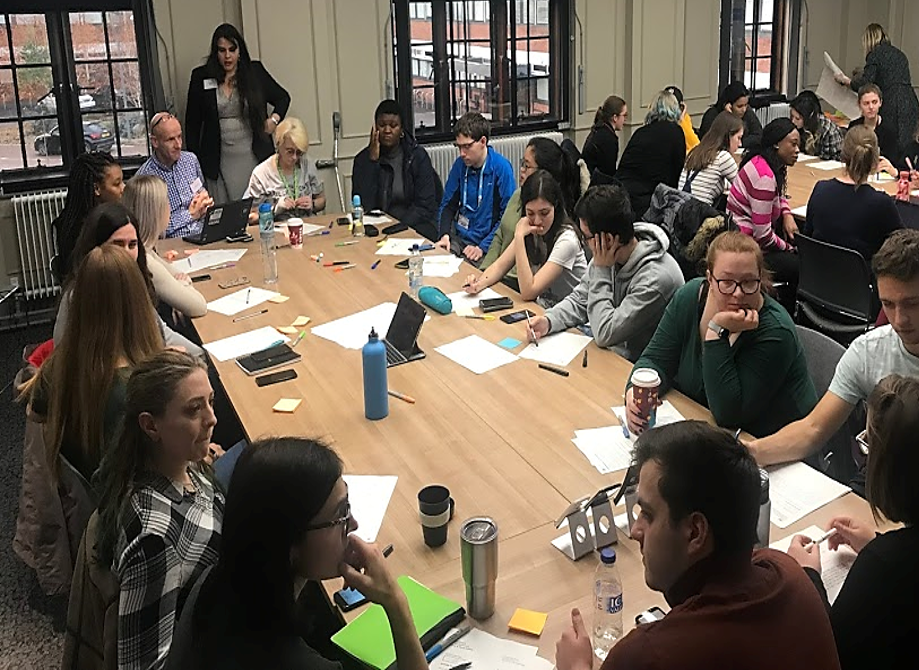TESTING THE PUBLIC’S UNDERSTANDING OF EMERGENCY ALERTS
Led by:
The Environment Agency runs the Flood Warning Service, an opt-in early alert service that sends text messages and automated voice calls to people who’ve elected to receive them. Legislation was passed when the UK was in the EU, mandating for all EU states to develop citizen emergency alerting for all emergencies.

The challenge
PROJECT PARTNERS
The Cabinet Office
EE
The Environment Agency
The Flood Innovation Centre
Fujitsu
The University of Hull
HOW WOULD THE PUBLIC RESPOND TO EMERGENCY MESSAGING?
Having tested both mobile messaging solutions (SMS text messaging and cell broadcast messaging) it was clear that cell broadcast was the most robust way of sending out emergency alerts. However, there were technical challenges to doing this, and nobody knew how members of the public would react to this new type of message. Cell broadcast messages are sent out directly from a mobile network tower to all phones within a specific area. This makes cell broadcast is robust and secure, but they also feature a unique and intrusive alert tone, they override individual handset settings. How would the public respond to their mobile phones doing something new?
The solution
PROJECT LEAD
Dr Kate Smith,
Flood Innovation Centre, University of Hull
PROJECT TEAM
Dr Rob Thomas,
Energy and Environment Institute, University of Hull
ON-CAMPUS TRIALS OF EMERGENCY MESSAGES
Dr Rob Thomas from the Energy and Environment Institute and Dr Kate Smith from Flood Innovation Centre worked with colleagues from the Environment Agency, the Cabinet Office, Fujitsi and EE to run a field-test of new mobile messaging technology, which uses cell broadcast to send emergency alerts to mobile handsets.
The University of Hull’s campus provided an excellent location to test the public’s response to cell broadcast messaging: with mobile phone masts on campus the technical team identified several locations where live test messages could be sent. Working closely with the team from the Environment Agency, we recruited volunteers from the University community to take part in the cell broadcast trial. In the end, technical challenges meant that we were unable to use the live network to send test messages to participants’ phones, so we used a range of different handsets provided by Fujitsu which displayed a realistic screen capture of a message being received.
We ran three workshops over the course of one day, facilitating focus group conversations and structured discussion with 90 participants in total. We asked participants what kind of emergencies they’d expect to receive a message for and what content they’d like to see in them. We ran the demonstration using the pre-recorded messages on Fujitsu’s handsets and asked participants to record their responses and reactions. Finally we carried out a hands-on activity to find out more about when participants would expect to receive a flood warning using cell broadcast.

“The messages were definitely attention grabbing – especially the audio. It is kind of annoying enough for it to not just be ignored. I think the messages with the red warning triangle were better, making the message more pressing”
Research Participant
The RESULT
CELL BROADCAST WORKS – BUT NEEDS TO BE ACCESSIBLE
Our data shows that cell broadcast is an effective way of sending messages. People responded to the distinctive alert tone and unique message behaviour by saying that they would take action to protect themselves and their property. Many participants told us that as well as protecting themselves, an early response would be to reach out to vulnerable friends, family and neighbours to ensure that they could take action as well. Participants also emphasised the need for messaging technology to be fully accessible to users with different needs e.g. as well as an alert tone, messages could activate phone torch or flash.
Within weeks of completing the on-campus work, the initial results had been presented back to the Cabinet Office and resulted in the government deciding that cell broadcast would be the preferred technology for the UK’s emergency alerting programme. As the culmination of many years work by colleagues within the digital and flood warning services teams in the Environment Agency, this was a fantastic result and a worthy reward for everybody involved. Whilst the deployment of cell broadcast was impacted by the coronavirus pandemic and subsequent changes to government priorities, Government Digital Services have run several successful small-scale trials around the UK since June 2020. Once up and running cell broadcast emergency messaging will make a real difference to public safety in the UK, saving lives and reducing losses from flood and other hazards.
